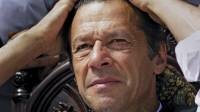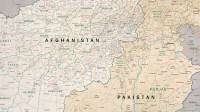When the injured Imran Khan claimed in a speech from his hospital bed in Lahore two days before the May 11 polling that the electorate in Khyber Pakhtunkhwa had already made up its mind to vote for the Pakistan Tehreek-e-Insaf, many found his optimism misplaced.
But the cricketer-turned-politician and some keen observers of the situation knew that the voters in the militancy-hit province were determined to reject the ruling and the established political parties and bring into power an untried party promising change.
The PTI emerged as the single largest party in Khyber Pakhtunkhwa by winning 17 National Assembly seats out of 35. It also bagged 35 provincial assembly seats out of 99 and soon afterwards attracted nine independently elected MPAs to its fold. Two more independents could join its ranks in the coming days.
The PTI would be able to win at least 10 out of the 22 reserved seats for women. It would also easily win one of the three seats reserved for the minorities. The PTI strength in the 124-member Khyber Pakhtunkhwa Assembly would thus be more than 55. It would need support from eight more MPAs to reach the figure of 63 to gain a simple majority to be able to establish its government.
However, it has already ensured its majority in the provincial assembly by making power-sharing deals with two smaller parties, the nationalist Qaumi Watan Party (QWP) led by former federal minister and two-time chief minister Aftab Sherpao having eight MPAs and the Jamaat-i-Islami (JI) with its seven lawmakers. The QWP and JI, too, would win their share of reserved seats for women and the minorities and together with the PTI would form a stable government in Khyber Pakhtunkhwa.
The PTI also managed to win one National Assembly seat from the Federally Administered Tribal Areas (Fata) when its candidate, Qaisar Jamal Afridi, was elected from the constituency meant for six Frontier Regions. Dr Ghazi Gulab Jamal, who was in the recent past associated with the PTI but had contested election for the lone National Assembly seat from Orakzai Agency as an independent candidate, could also rejoin the party after having won his seat.
The election for 11 out of the 12 National Assembly seats from Fata has been decided while re-polling in some stations in Bara in Khyber Agency would decide the winner in NA-46. Two PML-N candidates won National Assembly seats from South Waziristan and Bajaur while six others elected as independents from Fata have also joined the party. This was to be expected when the PML-N emerged as the largest party in the National Assembly and began preparations to establish its government in the centre.
Still the PTI did well in Fata as some of its candidates put up good fights against the winners and one was able to win his seat.
PTI’s central secretary general Pervez Khattak, who won election both to the national and provincial assembly from his native Nowshera district, has been put up by the PTI, QWP and JI as their joint candidate for the office of the chief minister.
The 62-year old Khattak served as provincial minister twice in the past and was associated with the PPP for years. Like many other politicians, he joined the PTI when Imran Khan’s political fortunes rose dramatically after a mammoth public meeting in Lahore in October 2011.
His nomination by Imran Khan for the chief minister’s job briefly generated controversy as many party workers associated with the PTI for years resented the move. They complained that a newcomer in the party had been preferred to Asad Qaiser, the PTI provincial president, who had defeated Pervez Khattak for the post in the party election a few months ago. Asad Qaiser’s association with the PTI is almost 17 years old and the party loyalists backed him for the chief minister’s office against Pervez Khattak, who joined the PTI 18 months ago. The issue quickly turned into the familiar old versus the new tussle involving old-timers and newcomers in the party.
It could have got out of hand if Imran Khan had not intervened despite being bed-ridden due to back injuries suffered in the fall from a forklifter during a public meeting in Lahore.
He summoned Khattak and Asad Qaiser to Lahore to effect reconciliation between the two and persuaded the latter to accept the party decision to make Khattak the chief minister. Asad Qaiser was offered the post of provincial assembly speaker and the issue was resolved, at least for the time-being. However, it didn’t stop some PTI activists from lamenting that Imran Khan had committed the first injustice as leader of a party that is named as the Movement for Justice. The old versus the new debate could erupt again when the eight PTI nominees for the provincial cabinet are finalized as both sides would want to have a larger share in it.
All political parties suffered losses at the hands of the PTI, but the former ruling parties, ANP and PPP, were the major losers. The PML-N, QWP and JI, too, lost seats to the PTI candidates with the former mostly in its stronghold of Hazara.
JUI-F chief Maulana Fazlur Rahman was bitter in defeat as the PTI’s tsunami swept away his candidates and shattered his dreams of ruling the province. Such was his bitterness that he refused to concede the PTI’s mandate and accused the party’s mostly inexperienced candidates of rigging the polls.
It is obvious that he had realized the PTI’s growing popularity. He had not only warned the faithful that voting for PTI candidates was un-Islamic but had managed to persuade some leading religious scholars to issue a ‘fatwa’ accusing Imran Khan of denying the finality of the prophethood of Hazrat Muhammad (peace be upon him) and having a soft corner for Ahmadis.
The voters ignored all this and also defied threats by the militants to vote in record numbers for the PTI’s unknown candidates.
Imran Khan has promised to set up a model government in resource-deficient Khyber Pakhtunkhwa, but it won’t be easy considering the fact that the PTI due to its coalition with the QWP and JI would have to listen to these two parties and keep in mind their sensitivities. The PTI cannot have a free hand to implement its manifesto and make policies to the exclusion of the QWP and JI.
More importantly, restoration of peace in the province would have to be its top priority to be able to do anything meaningful in terms of implementing development projects, undertaking reforms and attracting outside investment.
But the peace process cannot move forward without the support of the federal government headed by the PML-N and the military as Fata being the stronghold of the Tehrik-i-Taliban Pakistan (TTP) militants is federally administered and beyond the jurisdiction of the provincial government.
Ensuring an end to the U.S. drone strikes, halting Pakistan Army operations in Fata and talking to the Taliban are foreign and security policy issues with regional implications and only the federal government would have the authority to firm up policies to this end.
The general perception is that PTI’s success or failure as the ruling party in KP would be the yardstick by which the electorate in the other three provinces would decide whether to vote for it in the next election.
Awami no longer
In its worst election defeat, the Awami National Party was reduced to a marginal player in Khyber Pakhtunkhwa politics when it won only one National Assembly seat out of 35 in the province and secured just four provincial assembly seats from the 99 for which polls were held on May 11.
It was a massive climb-down for a party that was the senior partner in its coalition government with the Pakistan People’s Party for five years after emerging as the single largest party in the province in the 2008 general election.
At the time, it was in control of 10 national and more than 50 provincial assembly seats. Every ANP stalwart lost election and the party head Asfandyar Wali Khan trailed to the third spot in his National Assembly constituency, NA-7 Charsadda, behind the winner, Maulana Gohar Shah of the JUI-F and the runner-up, Pakistan Tehreek-e-Insaf’s Fazal Mohammad Khan.
Due to his past victories, Ghulam Ahmad Bilour was considered a formidable candidate in NA-1 Peshawar, but he lost by around 47,000 votes to PTI chairman Imran Khan.
The outcome of the polls shocked the party leadership and members as they were confidently claiming before the election that forming a stable government in Khyber Pakhtunkhwa would be impossible without a role for the ANP.
Asfandyar Wali and the party’s provincial president Afrasiab Khattak blamed “hidden hands” and external and internal forces for ANP’s defeat and complained that the party didn’t get a level playing field due to security concerns following the attacks on its election campaign by the militants.
It was pointed out that 62 ANP activists were killed in 31 terrorist attacks from March 30 to May 11 in different parts of the country.
The party set up a committee headed by former Senator Bashir Khan Matta to find out the causes of the ANP defeat in the election. The move failed to satisfy many ANP activists, who felt the issue would be forgotten by the time the committee submits its report in two months.
They wanted the top party office-bearers to accept responsibility for the defeat and step down as their policies had been rejected by the electorate.
It was obvious that the voters in Khyber Pakhtunkhwa wanted a change after putting up with five years of ANP rule characterized by bad governance and corruption. They had earlier in 2002 voted the MMA into power and then dumped it in the 2008 general election due to its poor performance.
The voters gave the mandate to ANP in 2008, but it, too, couldn’t come up to their expectations as it failed to restore the promised peace or resolve the myriad of issues faced by the people. It was decisively voted out in 2013 and the PTI was given the chance to fulfill the promises made to the voters.
The electorate has now attached hopes with the PTI and it could meet a fate similar to the MMA and ANP in the next election if it fails to deliver. Post-2013 election, the ANP would no longer be able to claim that it represented the Pakhtuns. However, the party is capable of rebounding on the strength of its grassroots organizational set-up and its slogan of Pakhtun nationalism. — R.Y.
The writer is a senior journalist based in Peshawar.




















